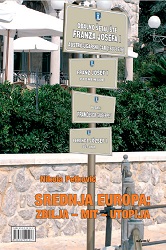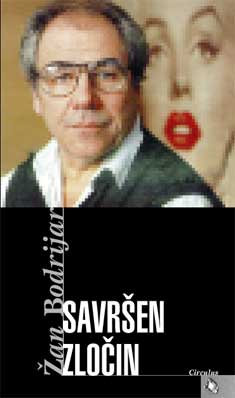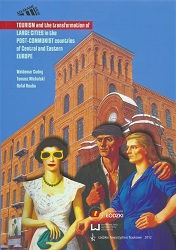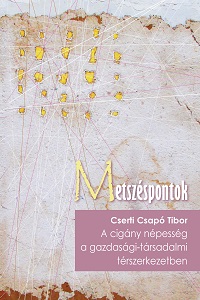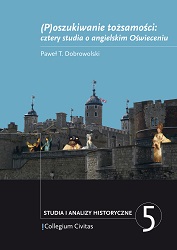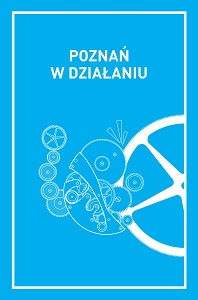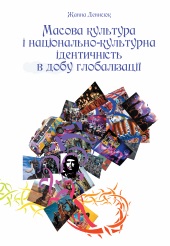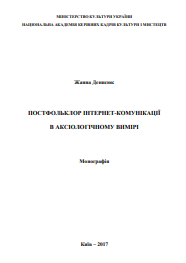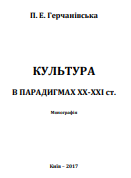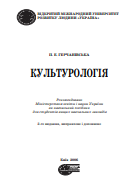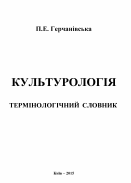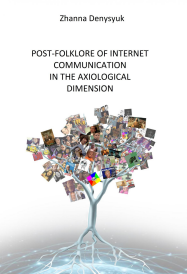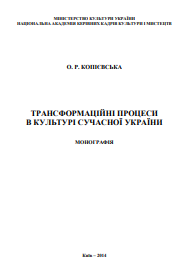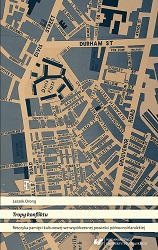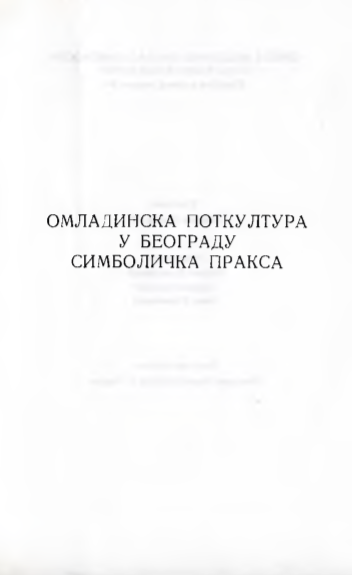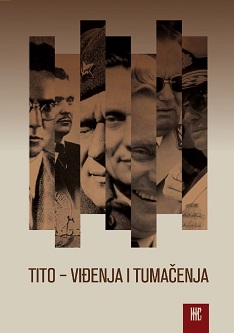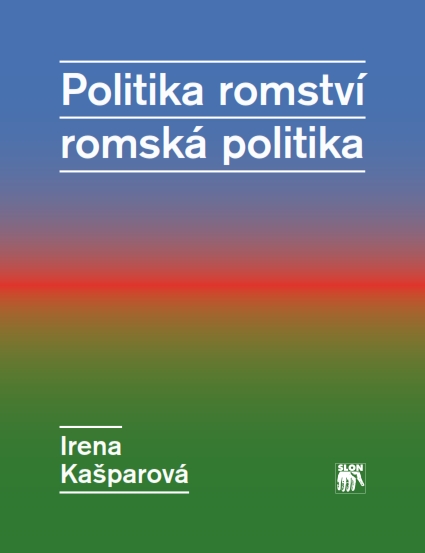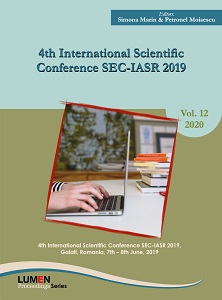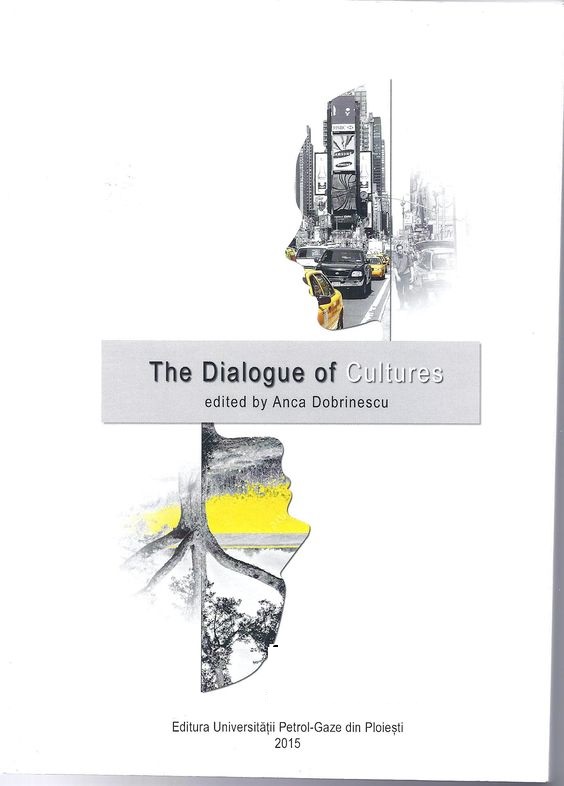Author(s): Tibor Cserti Csapó / Language(s): Hungarian
This study aims to represent the situation and life circumstances of the Hungárián Gypsy population while examining different fields of the problem-complex and tries to make it easier to understand the origins as well as the historical-sociological- economical aspects of those fields.First of all, we developed a model to imagine the society with the social-economical environment surrounding the people or the group in it. This model we call niche- model. The study presents the niche-model we use to analyse the situation of the Gypsy population in social-economical environment.The term, niche means chamber, place or hole in the different disciplines. Often used by ecology it refers to the imagined place of different populations in nature. Natural environment is composed of enviromental factors. On every axis of these factors we can locate the optimal range which ensures good life conditions. From these intervalls we can find out the niche which is the imagined place of the given species in nature.We interpret similarly the social-economical environment of persons or groups of people in the society, the factors here involved are: age, marital status, number of children, qualification, social status, odds at labor market, etc. We can follow on the axes the revealing parametres of the group to determine the niche the given group occupies in the structure. When the environment changes, the niche deforms and people must adapt, migrate, assimilate accordingly in the different historical situations. The Gypsies are doing the same. That is why we looked at the history of Hungarian Gypsies with a focus on the great changing, transforming periods of the social-economical environment examining how the Gypsy community was reactive to these changes of their former niche. We have found out that this history until today shows continuously decreasing opportunities of finding their place in the social-economical structure.In the model every factor is coherent with the others. That is why the policy helping Gypsies must observe and attend the interactions of the factors. Featuring certain axes of this model we can examine the situation of the Hungarian Gypsies from the given aspect as well as point out coherences with the other ones.
1. Status in demography
The first data on the number of Gypsies in Hungary exists from 1782. The number that time was 43738 on the present area of the country. Subsequent data show a little growth (in 1873: 50040 person, in 1893: 65000 person). We can contrast it to the model of the demographic changes in Hungary. In this model the first period of the „demographical behaviour” of different populations shows a very high natality index and a high mortality index as well as a low level of growing trend of the population. After the industrial revolution due to modernisation and development of life conditions the mortality rate decreased and thus a rapid accession of the population began. However, not like in the Hungarian society this growth started only later among the Gypsies, after World War II and on, during the era of socialism. The latest data reflect the later period of the model. In 1971 the number of gypsies is already 320 000, in 1994 this number is 482 000 and 540 800 in 2003. (see figure 4) During this period the population of the country became a regressive and elderly group meanwhile the Gypsy community is a young and growing group. Although figures of natality index show a little change: they are 3,2 per cent in 1971, 2,87 per cent in 1994 and 2,53 per cent in 2003 (see figure 5). (Kemény-Janky-Lengyel, 2004) It seems like the same process would have started which marked the demographic tendencies of Hungary from the middle of the 20th century. Perhaps there are changes in the thinking of the Gypsy community about demographical behaviour, slow changes in norms and values. Results of different researches seem to affirm the supposal.
2. The settlement of the Gypsy population in Hungary
Some centuries ago Gypsy groups in Hungary led a wandering lifestyle, which was their way of finding their role in the social division of labor, always looking for work opportunities, sources of living currently available to them in local micro- communities. Consequently, there is no efficient way of assessing their then spatial distribution. The Habsburg monarchs (Charles VI., Maria Theresa, Joseph II.), however, had a coherent policy on the Gypsy issues and aimed at settling these people down, hence making the levying of taxes on them possible also at having them gradually adapt to the norms of the majority society, thus, in the end, at assimilating these communities. The census of 1893 already showed that nine tenth of the Roma in Hungary led a settled life by then. This way of living became absolutely dominant by the 20th century.The present study analyzes the spatial distribution of today’s Gypsy population in Hungary, along with its historical roots and the problems related to it.The distribution of the Roma population within the country’s territory is not homogenous. It is a historical fact that some areas, regions are characterized by a higher proportion of Gypsy inhabitants. Today’s distribution patterns have been influenced by geographical, economic and social as well as historical processes. And, even though the great social-economic transformations of the 20th century left their mark on the distribution of this people as well, as they induced some typical migration processes with typical directions, this kind of historical stability is still reflected in some „classic” regions of settlement.In the first place, therefore, we are going to look for the reasons why some regions of Hungary have more Roma inhabitants, both in absolute and in relative terms, than some other areas where their concentration as compared to the total population is lower.However, we are not very likely to find one single factor which could account for spatial dif ferences on the whole. Various analysts have brought up a number of different potential explanations for the phenomenon. Chances are that these factors all had some influence, possibly varying in extent by region and that it is the combination of them which can provide the explanation we are looking for.
2.1. Factors affecting spatial distribution
2.1.1. Physiographic reasons
a) Antal Hermann, in his analysis of the 1893 census of Gypsies, wrote that there were two densely populated areas protruding from Transylvania (Erdély) towards the inner regions of the country. One of them is the northern, northwestern part of the Great Hungarian Plain (Alföld) in front of the mountain rim, while the other is the southernmost region of the Great Hungarian Plain directly neighboring Romania and former Serbia. The author gives an explanation of a physiographic nature for the concentration of Gypsy people in these areas: according to him, neither the mountains (where making a living is rather hard) nor the completely flat plain fit the Gypsy „nature” in terms of natural endowments (raw materials needed for traditional Gypsy crafts), the absence or presence of which explains the settlement patterns of Gypsies.
2.1.2. Social-economic environment
b) Another important factor influencing the settling of people is the social-economic environment. It might have played a role where they could find a market for the output of their traditional crafts.
c) It is worth mentioning the fact that the various counties and municipalities applied highly differing approaches in implementing the resolutions of the Habsburg monarchs. Obviously, Roma people always sought for regions where harassment by local administration was less severe or where the enforcement of those resolutions remained weak.
d) The state and structure of the local economy and the relevant inequalities between the various regions might also have had an effect on settlement. Neither the more advanced state of embourgeoisement, the more developed industrial and agricultural sector in Northern Transdanubia (Észak-Dunántúl), nor the intense agricultural activities and the puritan lifestyle of local small-holders in the southern part of the Great Hungarian Plain supported traditional Gypsy crafts, therefore wandering Roma craftsmen avoided these regions (Pomogyi 1997).
e) The process was further affected by the potential presence of other minorities and the receptiveness of local inhabitants. Roma people found it hard to settle down in towns with a German or Southern-Slavic population, especially because of the very rigid social structure of Germans. Hence one might find a settlement with hardly any Gypsy inhabitants while the neighboring village, with similar geographical endowments, is home to a large number of Roma. In Somogy county, for example, they constitute only 1.9% of the population of Csoma, a village previously inhabited by ethnic German people, whereas the equally populated Büssü, originally inhabited by Hungarians, boasts a 49.3% proportion of Gypsy citizens.
f) Historical processes, the central government’s approach towards and measures affecting Gypsies, and the changing tendencies of the social-economic environment had an important role, without a doubt. During the era of socialist nationality policies, when their isolated gypsy camps on forests’ perimeter were abolished (which began shortly after 1961 as a consequence of the 1961 resolution on the abolishment of settlements not satisfying certain social requirements, passed by the MSZMP KB (Hungarian Socialist Working People’s Party, Central Committee)), they moved primarily into nearby townships, predominantly villages. Furthermore, attention must be given to where Gypsy communities had been moved to by the central administration (predominantly so-called „dwellings of inferior value” constructed on the outskirts of small villages, abandoned manor houses, mine camps, military barracks, etc.).During the 20th century, with traditional Gypsy crafts losing ground, and especially under the circumstances of socialist industrialization, natural factors were losing importance. Economic factors and interventions of a political nature, however, began to have an increasingly significant influence on the process of spatial restructuring. Starting in the 1950’s, the enormous demand for unskilled workforce created by fast-paced industrialization and the construction of industrial cities induced heavy migration towards industrial regions and towards the capital.After the political transition, as a result of the collapse of the socialist industry and soaring unemployment rates, the very opposite happened, and the Roma started to migrate back to the agricultural regions of the countryside.
2.2. Spatial distribution of the Roma population
Today, some 20% of Gypsies live in the Southern Transdanubian (Dél-Dunántúl) counties (Zala, Somogy, Baranya and less typically Tolna), 51% belong to the north- eastern part of the country (Nógrád, Heves, Borsod-Abaúj-Zemplén, Szabolcs-Szatmár-Bereg and Hajdú-Bihar counties), with nearly 10 percent concentrated in the capital. It is apparent, however, that they are hardly represented in more prosperous regions, such as the counties in Hungary’s northwestern territories (Cserti Cs. 2006).The demographic transformation among the Gypsy population following World War II caused a kind of relative overpopulation in the regions traditionally inhabited by Gypsy people. Changes in the social-economic field, at the same time, also affected the spatial distribution of the group in question. The restructuring of Hungary’s economy - industrialization, development of the centers of heavy industry, urbanization process unfolding in the capital, in politically preferred rural cities and in heavy industrial regions - naturally affected the spatial distribution and the migration patterns of the Roma as well as those of the country’s entire population. Migration brought about some shifts in emphasis of their spatial distribution. During the migration process, the hope for a better living, a better wage or simply for a job was appealing (in this era of industrialization and huge state-funded investment projects, it was relatively easy to find a job as an unskilled construction worker). On the other hand, the economic underdevelopment of rural areas together with the collectivization and mechanization of agriculture acted against Gypsies’ attempts to enter the wage economy, thus remained a mitigating factor to migration.The concentrated distribution of the Roma population in today’s Hungary is well illustrated by the fact that 15% of the country’s area is home to 50 percent of all Gypsy inhabitants. (See figure 21!)Figure 23. illustrates the general state of Hungary’s micro-regions. It is apparent at first sight that underdeveloped and severely underdeveloped micro-regions (categorized employing a variety of complex indices) overlap with those territories of the country where Gypsies are overrepresented in the population.Looking at employment statistics of Hungarian micro-regions, we find that the areas with the least favorable labor market characteristics practically coincide with those where the absolute number and the proportion of the Gypsy population are highest. This indicates a self-fulfilling process. These parts of the country have a long history of an unfavorable economic structure and weak employment figures - a fact that encouraged the settling of Roma people, a group of society who had been crowded out of more prosperous regions where they could not find their place, nor any job opportunities. On the other hand, the majority of Roma people living in these regions are characterized by low school qualification levels and low levels of professional skills, thus they are multiply disadvantaged - in an environment where potential employers are rather scarce, anyway. As a result, employment figures of these micro-regions are further worsened by the large numbers of hopelessly disadvantaged people living there.The comparison of the demographic status of micro-regions with that of the territories inhabited by the Roma leads to mixed conclusions. Some of the micro- regions (Northern Hungary) boast much more favorable demographic figures as compared to the total population average. Probably, this is partly due to the younger age distribution of relatively large local Gypsy populations. There are some micro-regions representing the total population average in terms of demographics (primarily in the eastern border region and the Middle Tisza Region), and some with an unfavorable demographic status (mainly in Southern Transdanubia and Inner Somogy), where demographic aging, population decrease and the low number of births are most probably related to the micro-village settlement structure characteristic of the region. In these areas, the presence and the unique demographic characteristics (as compared to the majority society) of Roma people are insufficient to offset unfavorable demographic processes.The areas inhabited by larger numbers of Roma people are typically characterized by small settlements, which fact, again, is interrelated with the social-economic status and the breakout opportunities of this minority - as the disadvantages in transportation geography of these villages inevitably mean an unfavorable economic structure, the lack of job opportunities and difficulties in contacting employers in regional centers of gravity. Furthermore, it means a limited access to educational infrastructure, to further education, to skills acquisition opportunities, thus maintains the socially disadvantaged status caused by low levels of education.Regions with unfavorable educational qualification figures also appear to overlap with those having a high proportion of Roma inhabitants. This is clearly a consequence of Hungarian Roma lagging far behind in terms of educational qualification.
3. Life circumstances
The analysis of living conditions, too, shows the backwardness of the regions traditionally inhabited by Gypsies. The share of so-called „full-comfort” dwellings (dwellings with a room of at least 12 m2, kitchen, lavatory, public utilities (electricity, potable water, sewage, hot water and central heating equipment)) is below, while the share of those „without comfort” (dwellings with a room of at least 12 m2, kitchen, access to outdoor lavatory and potable water, individual heating equipment) is above the average. The share of dwellings with access to the public gas distribution network, public potable water supply and sewage system is even lower.
4. Distribution of the Roma population by settlement type
The census of 1893 reported 13.3% of the Roma population living in cities with the remaining 86.7% living in rural areas. The historical and economic processes we reviewed earlier caused changes not only in spatial distribution but the proportion of Gypsies living in cities has been constantly increasing, as well. The most important factors fostering Gypsies’ migration to the cities were the industrialization and urbanization processes of the socialist era also the attempts to abolish gypsy camps (the latter, though not solving the problem of „ghettos”, began to turn some of the suburbs and poorish downtown districts of cities into slums by driving large groups of Gypsies towards these areas). As a consequence, figures show the following changes: a 1971 study by Kemény report a 22% share of cities in Gypsies’ place of residence. By 1986, urban population reached 41.1%, with 58.9% in rural areas. This was still behind the average Hungarian urbanization level (58.9% share of urban population) and it has not improved since then as some 63% of the total Hungarian population now live in urban areas.Differences appear to be even more significant in the case of smallest settlements when analyzing the distribution by settlement type of the Roma and the non-Roma population. The share of total population living in settlements with less than 2,000 residents is 16.8%, whereas the same proportion for the Roma amounts to a stunning 40%; the figures are 7.8% and 20% , respectively, for settlements with less than 1,000 residents. In typical micro-village regions (Northern Hungary, Southern Transdanubia and the eastern territories, where Szabolcs-Szatmár-Bereg is the only county with a larger number of villages inhabited by less than 1,000 people), the share of those living in micro-villages is even higher (Havas 1999b). Thus the Roma population can typically be found in the rural areas of Hungary.In areas traditionally inhabited by the Roma, the share of urban resident Roma is still lower than the relevant country-wide average (15.3% in Szabolcs-Szatmár-Bereg county, 15.5% in Heves county and 26.4% in Baranya county), which also implies that the Roma who had left their place of birth in the past primarily chose large cities and industrial centers outside their own county as their new home (Kocsis - Kovács1999).
5. Migration processes
Notwithstanding our above statements on the spatial distribution of the Roma and the changes thereof, the traditional geographical distribution of the Gypsy population has not changed too much. The majority still lives in Northern Hungary, the northern part of the Great Hungarian Plain and in Southern Transdanubia, just like during the preceding centuries. Data rather suggest that we should focus on the changes in proportions within these regions.Comparing the data on spatial distribution contained in the 1893 census with those of today, Southern Transdanubian counties jumped forward in the „ranking” of areas most inhabited by Gypsies indicating that these areas received significant numbers of Roma immigrants of Romanian mother tongue at about the turn of the century and afterwards (Havas 1999). Later, intra-country migration patterns further strengthened this process.While at the end of the 19th century half of the Roma population lived on the Great Hungarian Plain, this figure dropped to about one third by the 1980’s, thus the Plain lost in significance among the regions inhabited by Roma. Their absolute number in this region, however, increased, it was only their share in Hungarian Roma population which declined. Migration flows started off from the (primarily rural) areas of Szabolcs-Szatmár-Bereg county and Borsod-Abaúj-Zemplén county heading towards Budapest and the cities in Borsod-Abaúj-Zemplén county and Hajdú-Bihar county. The share of Northern Hungary in the total Roma population constantly increased until the end of the 1980’s (the decline of heavy industries). At the same time, Northern Hungary, too, is characterized by a high rate of natural population growth, thus the number of Gypsies living there has been and is constantly increasing. The situation is similar in the region of Hungary’s capital, as well. The constant growth in population was accompanied by the increase of their share within the total Roma population until the 1990’s. The last decade of the 20th century, though, witnessed a turnaround and the Roma in the capital now represent a lower percentage of the total Gypsy population of Hungary. The share of Transdanubia has been permanently decreasing. Increasing population but a decreasing share in total Roma population is characteristic for Southern Transdanubia, while in Western Transdanubia the relevant proportion increased, as well. These figures, however, only indicate some shifts in the spatial distribution of the Roma, whereas the actual size of the population has been constantly growing in each mentioned region. Inter- county migration, however, was lower from Southern Transdanubia, Gypsies rather moved to large cities and socialist industrial centers of the same region.Details of these shifts in distribution are reflected in county-level data. In the 1893 census the five counties with the largest number of Gypsy inhabitants, in ascending order, were: 1. Borsod-Abaúj-Zemplén, 2. Szabolcs-Szatmár-Bereg, 3. Jász-Nagykun- Szolnok, 4. Bács-Kiskun, 5. Baranya. By 1984, the list showed some changes: 1. Borsod-Abaúj-Zemlén, 2. Szabolcs-Szatmár-Bereg, 3. Győr-Moson-Sopron, 4. Baranya, 5. Pest. When considering the share of Roma as compared to the total population of each county in 1983: 1. Szabolcs-Szatmár-Bereg, 2. Borsod-Abaúj-Zemplén, 3. Nógrád, 4. Heves, while in 1984: 1. Borsod-Abaúj-Zemplén, 2. Nógrád, 3. Szabolcs- Szatmár-Bereg, 4. Somogy, 5. Baranya. The increase in comparison to 1978 was most marked in the counties Borsod and Zala, and Budapest. Gypsy population growth in Szabolcs-Szatmár-Bereg, Jász-Nagykun-Szolnok and Baranya slowed down, Győr- Moson-Sopron and Tolna even witnessed a decrease in absolute terms (Kocsis 1989). Analyses by István Kemény et al. indicate similar tendencies (Kemény 1997).An increasing number of Gypsy communities began to appear in the cities - the Roma, previously typically found in rural areas, turned towards urban territories. The role of Hungary’s capital increased markedly. In the end of the 19th century, Budapest and Pest county together represented some 6% of the Roma population. Their share grew to 20% by the 1990’s. The Roma population of the capital was about 600 people in 1893, an estimate of 30,000 was reported in 1978, and data from 1984 center about 41,000. Today, their number might be somewhere between 80-100,000, nearly 20% of all Hungarian Roma (Kocsis 1996).In the years following the political transition, the cities, county seats and the Budapest agglomeration remained primary migration destinations for the Roma.In the cities, and in Budapest as well, they could settle in neighborhoods/ districts which were abandoned by their former inhabitants, primarily the more well-off communities (Józsefváros, Kőbánya, Pesterzsébet). They moved into gradually deteriorating apartment houses, starting off the process which has more or less turned these areas into slums by now. During the era of socialist housing estates projects - along with the government’s inclination to abolish slums and Gypsy camps - large numbers of Gypsies moved into housing estates in the cities. After the resolution restricting people from settling in the capital had taken effect, migration to Budapest came to a halt while the Roma population of the suburbs and the settlements surrounding the capital started to grow rapidly. It is a characteristic of the process of concentration that a large number of those who were unable to leave rural areas right in the beginning became commuters (on a daily, weekly or, in the case of some more distant places of work, on a monthly basis; primarily from counties in the southern part of the country). If they managed to „take roots” in the city after a while, their family and relatives also started to move in soon.Béla Janky based his analyses of the migration patterns of the Gypsy population on the 1993-1994 Gypsy study of István Kemény, Gábor Havas and Gábor Kertesi. Data in the following table suggests that Roma are characterized by a higher willingness to migrate as compared to the total population of Hungary. This might have a variety of causes.The probability of leaving one’s hometown because of marriage is higher in villages (due to the relatively small population, the chance of finding a spouse from somewhere else is higher). The share of Roma living in villages is, however, much higher than that of the total population (Janky 1999).Migration rates/mobility is higher amongst the youth. The Roma population, at the same time, is of a much younger age structure than non-Roma groups, which might also be a factor acting to increase Gypsy migration rates.Yet, at the same time, there is no sign that the Roma would leave their place of birth during their lifetime more or maybe less frequently than average. Looking at the data by age group - which seems reasonable, as there might be a high number of Roma who have not left their place of residence yet, because of the lower average age of this ethnic group - we do not see a significant difference in frequency of migration as compared to the population average.The same data arranged by settlement type show that the Gypsy living in settlements demonstrate a lower rate of moving, while urban dwellers’ figures practically coincide with those of the total population. It is striking, however, how much the Gypsies living in Budapest cling to Budapest.The share of migrations from Budapest among all migrations is twice as high for the total population as for the Roma. Migrations between villages, however, occur twice as frequently among the Roma as among the total population. Although if one takes into consideration the differences in the distribution of the two populations by settlement type (the higher share of Gypsies living in rural areas and the higher share of the total population living in Budapest), differences in the rate of migrations between settlement types disappear.As for the share of intra-county and inter-county migrations among all migrations, about two thirds of Gypsy migrants remain within the same county, thus the relatíve distance to the new place of residence is lower. This figure amounts to approximately 55% among the total population.No large wave of inter-regional migrations exists among the Roma. The majority of migrants (typically not more than 2 or 3 percent of total population in any given year) remain within the same county. Still, a slow flow towards Budapest and the Western territories might be observed (Janky 1999).Janky also analyzed the migration rates of the 1970’s but he could not find any significant differences between the two populations, nor their migration tendencies (Janky 1999).On the other hand, a relatively small difference in the age structure of the Beas and that of other Gypsy groups was detected by Janky. The Beas were characterized by a slightly older age structure than the rest of the Gypsy population. Janky reasoned that the tendency of „Hungarization” is much stronger amongst the Beas, which clearly affects younger generations to a larger extent, thus the age structure of those with Beas as their mother tongue will necessarily become older (Janky 1999).Janky also made some interesting conclusions about migration patterns by mother tongue. There were significant differences between the Beas and the other Gypsy groups in the number of previous places of residence, but the characteristics of those with Romani as their mother tongue were different from those of Hungarian- speaking Gypsies, too.Yet, there were not much more Beas having moved to another county or region than as compared to other Gypsy groups. Thus, they are also primarily characterized by intra-county migration.
6. Segregation
Along with migration, it is inevitable to mention the process of segregation (settling in separate places) as a factor dramatically worsening the living conditions of the Roma.Segregation, as far as rural/urban sociology is concerned, denotes the phenomenon of the residential (spatial) separation of the various social groups. The area, settlement or district where a specific type of population is concentrated, gradually separates from the totality of remaining settlements or the remaining districts of the city both in spatial terms and in terms of sociology. Social distance, hence, turns into spatial distance.Thus segregation is the spatial separation of social layers, the over-representation of a given layer in the social structure of a given district or region, as compared to the share of that layer in the total population of the city or the country. Segregation, by enlarging pre-existing differences in socio-structural status, brings about social disadvantages and solid differences in residential conditions and standards of living (Farkas 1996).The Roma in Hungary have always been characterized by a tendency of settling down in separated areas - because of the social distance between the Roma and the non-Roma ethnic groups and the closed, inward nature of their communities, which again was a result of the prejudice and the offenses against them.As early as in the resolutions of Maria Theresa, the settling of Gypsies in ghetto- like, segregated areas was prohibited. Nonetheless, it was this era when Gypsy camps began to gain ground - a process that is still going on. (The 1779 census reports only one camp in Somogy county, whereas by the beginning of the 20th century there were more than a hundred of them.)According to the 1893 census, in nearly 40% of Hungarian settlements, the permanently settled Roma population lived dispersed among non-Roma inhabitants (not separated), with a share of 64% living in houses. These indicate a certain degree of integration70 (Pomogyi 1995).70 A Magyarországon 1893. január 31-én végrehajtott czigányösszeírás eredményei. Magyar StatisztikaiResidential segregation is estimated to have grown to 90% by the first half of the 1900’s (Csalog 1997).Camps, however, are only one form of residential segregation. A broader problem is the so-called „ghetto-issue”, several types of which were described by Zsolt Csalog (1997):- It was a frequent spontaneous phenomenon from the 19th century on that Gypsies concentrated in a given street of a settlement (for example Csurgó).- Efforts for the abolishment of the camps often resulted in the birth of very similarresidential patterns - the cheapest, technically most outdated streets and areas became ghettos of a more and more homogenous population (e.g. Siklós).- The abolishment of Gypsy camps often remained a formality; inhabitants wereassigned emergency dwellings in former military barracks or the servants’ quarters of abandoned manor houses (e.g. Kaposvár).- Even though the resolution of 1964 required former camp residents to be settleddispersed among the population, this was largely ignored in practice. The so- called „CS” (referring to „csökkentett színvonalú”, meaning „of inferior quality”) constructions were completed in closed units on the edges of the settlements, officially justified by saving in some ancillary costs.- The newest form of segregation is the process of spontaneous „Gypsyization” in today’s micro-village regions (Csalog 1997). This process will be discussed in detail below.One might observe that recent decades have witnessed a constant flow of Gypsies from the camps to inner areas of the settlements, which trend, however, has more recently been slowed down by migration flows of a similar extent in the opposite direction (Janky 1999). The former process was fostered by the socialist campaign of the 1960’s for the abolishment of Gypsy camps. These efforts, and most significantly the family home building programme built on interest-free loans, indeed yielded some results, but the reproduction of camp lifestyle is still going on. Many camps were largely abandoned, on the one hand as a result of the loan programme and, on the other hand, owing to the economic boom unfolding in the end of the 1960’s, but also because of better job opportunities. However, new camps came to life, as well (Berey 1991).The abolishment of camps became topical in the beginning of the 1960’s. Within the framework of the comprehensive political reform concept, the first 15-year housing development plan was developed, the passing of which was shortly followed by the 1961 resolution of the MSZMP on the abolishment of settlements not satisfying certain social requirements. Relevant time series data from housing records suggest that the programme must have been an enormous success. In 1964, a total of 48,966 affected dwellings were recorded, whereas the number of dwellings in camps to be abolished appears to have dropped to 6,277 by 1984, with the population of these dwellings recorded as 222,160 and 42,066 people, respectively. The truth, however, was by far gratifying. A camp, for the purposes of the resolution in question, was defined asKözlemények, Új folyam, IX. kötet. 1895.a spatially separated area with at least four dwellings not meeting relevant social requirements. Thus statistics did not account for the totality of socially unacceptable dwellings: what they included - and hence, what the measures targeted - was the most apparent, spatially concentrated form of this phenomenon only (Berey 1991).The 1980’s already witnessed a widespread decline in the construction and housing sector, the constructions of camp residences were also slowing down; in a number of areas the abolishment of camps came to a halt or even reversed. Construction rates began to decrease.- The wages of camp residents could not keep in line with increasing construction material prices. Saving for a home loan downpayment became difficult.- With real estate prices on the rise, loan amounts more and more frequently proved out to be insufficient to pay for a dwelling (even for one in a less favorable technical condition).- The re-settling of the ever increasing number of those below or above working age and of old, ill inhabitants, who did not have any kind of financial background. Local councils did not have the material resources to solve these housing issues and a portion of those affected was reluctant to give up their everyday environment and move to some other place.- Dwellings in the camps could not be demolished as they were usually inhabited by more than one family, and not all of them could take part in the relevant programmes. Thus by the beginning of the 1980’s efforts for the abolishment of Gypsy camps ran into a deadlock in the entire country.What is more, the process induced by successful re-settling projects must not be considered as a clearly positive one. The moving of Gypsies from their camps into abandoned rural dwellings had fatal consequences for the everyday life and the local society of affected settlements, as it did not only increase the tension between the two ethnic groups but it also set into motion an erosion of the housing markets of villages large enough in extent to turn the pre-existing selective migration trends of disadvantaged settlements into a wave of people running away from these villages (Kocsis - Kovács 1999). To make things worse, these measures even failed in abolishing the phenomenon of Gypsy camps and in prohibiting their reproduction. According to Zsolt Csalog (1997), a 40% share of today’s Gypsy population live in classic Gypsy camps, while more than 70% are estimated to be subject to residential segregation.The migration flows of Gypsies to the cities during the decades of socialism seemed to be slowing down in the 1980’s as a result of the then visible signs of an economic crisis and with preferences shifting away from previously glorified socialist industrial cities, and another migration process in the opposite direction, towards the rural areas appeared to unfold.In recent decades, Gypsy population most markedly grew in the disadvantaged, stagnating, secluded areas of the country, typically characterized by a micro-village settlement structure, with weak administrative, commercial, cultural functions and bad infrastructural and communal conditions, and in backward industrial regions (Cserti Cs. - Forray 1998).In these disadvantaged regions, a certain process of „ethnic homogenization” already started before the years of the political transition, however, the 1990’s witnessed an acceleration of this process. This has been particularly apparent in multiply disadvantaged micro-villages. Young, able-to-work, socially more mobile members of the population are leaving these aging villages for large cities with more favorable conditions, and the worthless houses of these abandoned villages are getting occupied by social groups of deteriorating social conditions, who lost their grounds and their living elsewhere - for example Gypsies. In former socialist industrial cities, the majority of job opportunities suitable for the unskilled, unqualified workforce disappeared during the years of the political transition. For them, it is still easier to find a secure livelihood in villages, where the conditions for household food production and collection are given.These disadvantaged villages, however, constitute the end station of geographical mobility, a kind of dead end street - social rise is nearly impossible. The chances of labor market integration, of acquiring a job are very low - just think of their distance from potential employers, the disadvantages in terms of transportation geography and the costs of commuting to cities with potential job opportunities (Cserti Cs.2000).Employment in these areas is very low and because of the lack of infrastructure and capital inflow there is no hope for improvement in the short run. A characteristic of these multiply disadvantaged groups of Gypsies is, furthermore, the disastrous housing conditions, clearly apparent in terms of hygiene, health and lifestyle, as well. These latter accompanying symptoms again hinder the acquisition of a job.It is a typical process that Gypsies concentrate or their share of the population increases significantly in settlements where social-economic development has come to a halt, the original population is aging or is „voting with their feet” and, if possible, move to settlements with better endowments, better opportunities promising a better quality of life. Our case studies detected this phenomenon in all the three settlements. The high share of Roma in the population means the concentration of poverty in these settlements - as it is a result of the moving in or the staying of the „outcast”. Ethnic tensions and social tensions disguised as ethnic tensions further worsen the situation (Bíró et al. 1998).The appearance, the gaining ground and the population growth of the Gypsy in villages, therefore, is a function of the economic and social status of those villages, and, thus, it might be interpreted as an outcome of a process (Szuhay 1997). Residents’ attitude towards the „Gypsyization” of villages is related to the population retaining ability and the economic opportunities of those settlements (Szuhay 1997).Families unable to leave segregation behind will not be able to assimilate either, and assimilated families hit by segregation in their place of residence will dissimilate (Csalog 1997).The public image of a district does indeed influence migration processes, the succession of some settlements was observed to have accelerated when changes in the public image of that area occurred.Members of a given social layer tend to appear dispersedly at first, later moving in in ever increasing waves. Simultaneously, original inhabitants slowly start to move out of the area and the process later speeds up and turns into a kind of escape. During the process, a so-called „clip-point” might be determined, where there is a sudden turn in the proportions of the two different population groups. The phenomenon was studied on the appearance of people of color in large American cities, yet the process can be generalized and applied to the process of Roma people replacing non-Roma people in Hungarian villages or some urban areas. First, when the share of low-status residents reaches 5%, house prices in the area begin to sink as a result. Original residents still tolerate a 5 to 25% share of newcomers, but if their proportion exceeds this „clip-point”, the original population starts to flee in panic, they sell their homes and the resulting devaluation of dwellings further accelerates the inflow of poorer groups (Cséfalvai 1994). The very same process took place in Hungarian settlements. In 1994, the number of settlements with the proportion of Roma above 8% was already 675. The figure was above 25% in 94 of them, and in 9 settlements, the Roma constituted the majority. (Kocsis 1996)In recent decades, Gypsy migration into some of the capital’s districts (districts 6 to 9) has accelerated to a similar degree. By 1986, a stunning 47% of Budapest’s Roma population already lived in these areas. The share of Roma children in primary education was 2.7% in 1971, whereas it climbed to 8.3% by 1986 in these areas. The then 3.5% Roma population in these districts induced a strong ghettoization process and its continuing growth causes even more severe social and ethnic tensions (Ladányi 1993). The Hungarian population seems to be even less tolerant to Gypsies as were the original inhabitants of American cities to people of color in the above example.
7. Skills, qualification
Qualification and schooling are very important aspects of the problem-group of Gypsies. A low qualification means a low social status and this status is inherited from one generation to the other. The family can not teach the worth of learning, good attitudes nor can give a language-using habit wich is compatible with the language of the school, it also has bad financial potential for their children’s education so the next generation gets the same bad conditions in the school system and then on the labor market. What is more, the traditional community gives the example for girls to be mothers and wives just after the primary school and for boys to become skilled workers. Also the schools operating in the most disadvantageous areas inhabited by gypsies have worse facilities in instruments, teachers, etc.In the second half of the 20th century the qualification level of Hungarian Gypsies increased. Even so in 1994 only 0,2% of Gypsies had graduation from higher education and 1,5% of them had secondary school leaving exam. Most of the population get some craft (10,4%) or finish only the primary school (45,6%) or less (32,8%). 9,4% have never attended school. These data suggest not too good chances on the labor market. (KEMÉNY-JANKY-LENGYEL, 2004)
8. Positions at labor market
In the socialist era the employment of the Gypsy men was the same like that of the non-Gypsies. But after the social and economical changes in the 1990’s this fall to 29% among Gypsy men and 15% among women (1993). Casuals have low skill level, in addition, the Gypsy population live mainly in regions of the country with low economical potentials and in little villages where there are no working places. Formerly they worked in hard industry and agriculture but nowadays these fields can not give work and there exists a racial discrimination and prejudice in Hungarian society, among employers as well. We can find casuals in bad health conditions, among women, more and more young children, in a hopeless situation finally giving up their search for work anymore.These different fields result in a very complex question of the situation of Gypsy communities. The government has to observe and develop all of the fields simultaneously considering the possibilities and own demands of the community parallelly with the experiences of coherencies of the axes in the niche-model.
More...
